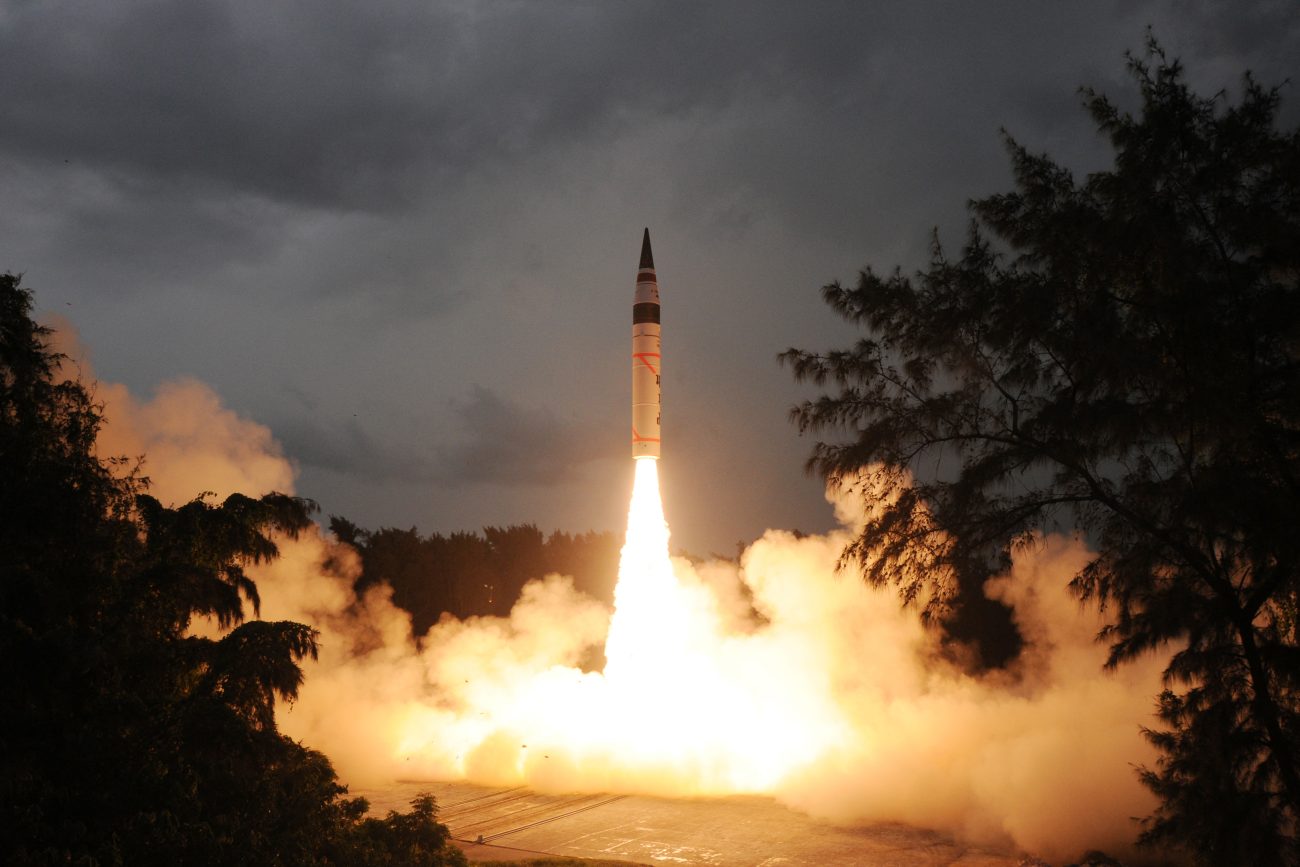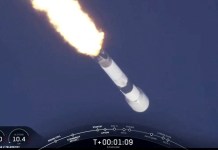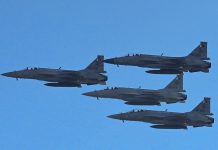India has carried out the second test of its Agni-5 missile, a weapon designed to carry a nuclear warhead deep into Chinese territory.
The timing is striking. Prime Minister Narendra Modi is preparing for his first visit to China in years, and the missile test underlines India’s effort to showcase its growing strategic reach just as diplomacy is cautiously picking up again.
The launch took place from Dr. Abdul Kalam Island off Odisha’s coast on Wednesday. According to the Defence Ministry, the missile “validated all operational and technical parameters” during the trial, which was conducted under the Strategic Forces Command (SFC).
Officials described it as a routine training exercise with an already inducted system, but its broader significance was hard to miss.
Second Agni-5 Trial With Advanced Capability
This is the second time India has tested the Agni-5 with advanced features.
Last year, on March 11, 2024, under “Mission Divyastra,” the missile was tested for the first time with a multiple warhead capability known as MIRV (multiple independently targetable re-entry vehicle).
That technology allows a single missile to carry three or four nuclear warheads, each able to hit different targets hundreds of kilometers apart.
While it will take years of testing before the MIRV version becomes fully operational, the development marks a significant leap in India’s deterrence capability.
Why Agni-5 Matters
With a range of over 5,000 kilometers (3,100 miles), the Agni-5 places all of China and Pakistan within reach.
It is solid-fueled, three-staged, and designed for mobility. The missile is stored and launched from hermetically sealed canisters, which protect it from the environment and allow the military to transport it by road or rail and fire it at short notice. This makes the system more survivable and operationally flexible.
The successful test reinforces India’s growing strategic reach and its commitment to strengthening nuclear deterrence in the region, particularly at a time of persistent tensions with Beijing.
India’s Expanding Nuclear Arsenal
The Agni-5 may be grabbing headlines right now, but it is only one part of India’s growing arsenal of nuclear-capable missiles. Since the Strategic Forces Command (SFC) was set up in 2003 to manage the country’s nuclear weapons, it has relied mainly on single-warhead ballistic missiles.
These include the Pakistan-focused Prithvi-2, with a range of 350 kilometers, the Agni-1 at 700 kilometers, the Agni-2 at 2,000 kilometers, the Agni-3 at 3,000 kilometers, and the near-intercontinental Agni-5 that can strike more than 5,000 kilometers away.
Together, they give India the ability to deter both Pakistan and China.
Meanwhile, the ex-IAF Vice Chief recently wrote for the EurAsian Times and argued that India’s DRDO is developing a bunker-busting missile based on the Agni series of surface-to-surface missiles.
Unlike the nuclear-capable Agni-5, which has a range of over 5,000 km, this variant prioritises payload over distance, carrying a 7,500-kg (7.5-tonne) warhead with a reduced range of about 2,500 km.
This design compensates for India’s lack of a strategic bomber, such as the B-2, by providing a cost-effective, missile-based solution.
Its 7,500-kg warhead, significantly larger than the American GBU-57’s 2,400-kg payload, delivers potentially greater destructive power, though penetration depth varies based on warhead design and target material.

Speculation Over Agni-6
In mid-August, India issued a Notice to Airmen (NOTAM) that cleared a huge swath of the Indian Ocean for live-fire trials, stretching nearly 4,800 kilometers from the Odisha coast.
NOTAMs are routine safety advisories to keep civilian air and sea traffic away from military test zones, but the unusual distance triggered speculation.
Analysts suggested that India may have been preparing to test either the extended-range BrahMos missile or even the Agni-6, a next-generation intercontinental ballistic missile that is still in development.
Agni-6 is expected to outclass all of its predecessors. While exact figures vary, most estimates put its range between 8,000 and 10,000 kilometers, with some assessments suggesting it could fly as far as 14,000 to 16,000 kilometers if equipped with a lighter payload.
More importantly, it is likely to carry MIRV technology, allowing a single missile to release up to 10 or 11 nuclear warheads that can strike different targets at once. If successful, it would make the Agni-6 India’s most powerful and sophisticated missile yet.
U.S. Navy’s Drone Boats Falter; Software Glitches Derail Washington’s Plan To Outpace China’s PLAN
Earlier, as EurAsian Times reported, Hans Kristensen, Director of the Nuclear Information Project, Federation of American Scientists, expressed his disappointment at the Agni-5 test. In an earlier article, he said that if India succeeds in developing an operational MIRV capability for its Agni-5 missiles, it will be able “to strike more targets with fewer missiles.”
“If either country believed that India could potentially conduct a decapitating or significant first strike against Pakistan, a serious crisis could potentially go nuclear with little advance warning. Indian missiles with MIRVs would become more important targets for an adversary to destroy before they could be launched to reduce the damage India could inflict. Additionally, India’s MIRVs might prompt Indian decision-makers to try and pre-emptively disarm Pakistan in a crisis,” Kristensen had said.
The Next Generation Of BrahMos
Alongside the Agni series, India is also working on advancing its BrahMos cruise missile. The Extended Range (ER) version of BrahMos has reportedly achieved 350 to 400 kilometers in its first test, with the upgraded version expected to reach 800 kilometers.
That range would be particularly concerning for Pakistan, which has always viewed the BrahMos as a direct threat.
Looking further ahead, India’s Defence Research and Development Organisation (DRDO) is developing the BrahMos-NG, or next-generation BrahMos.
Unlike the current missile, which can only be mounted on Su-30 fighter aircraft, the smaller and lighter BrahMos-NG is being designed to fit across multiple platforms, making it far more versatile.
A Year Of Constant Testing
India has been testing a wide array of missile systems throughout 2025.
In July alone, it carried out two back-to-back successful tests of the Pralay, a quasi-ballistic missile capable of precision strikes at ranges up to 500 kilometers. The SFC also tested the short-range Prithvi-II and Agni-I, keeping them battle-ready.
Other trials included the Akash Prime surface-to-air missile, a new drone-launched missile designed for deep strikes, and the Astra air-to-air missile equipped with an indigenous radio frequency seeker. Astra was fired from a Su-30 fighter jet, further strengthening India’s air combat capabilities.
The Bigger Picture
Taken together, these efforts show that India is steadily modernizing every layer of its missile arsenal, from short-range battlefield systems to long-range nuclear deterrents.
With Agni-6 in the works, BrahMos set for upgrades, and a flurry of new missile tests already carried out this year, India is positioning itself for a future where its strategic deterrence and conventional strike capabilities are more flexible, survivable, and far-reaching than ever before.
India & China: Cautious Rivals, Uneasy Partners
India and China, the world’s two most populous countries, remain locked in a tense rivalry for influence across the Asia-Pacific. The relationship turned especially bitter after the deadly border clashes in the Himalayas in 2020, which pushed ties to their lowest point in decades.
Since then, Beijing has moved quickly to expand the People’s Liberation Army’s arsenal, while India has struggled to keep pace.
According to a June report by the Stockholm International Peace Research Institute (SIPRI), China is believed to have around 600 nuclear warheads, compared with India’s estimated 180.
Against that backdrop, India’s recent Agni-5 missile test is seen as part of its effort to narrow the gap, even as diplomacy has started to thaw the icy atmosphere.
A Fragile Thaw In Relations
The test followed a visit to New Delhi by Chinese Foreign Minister Wang Yi, which laid the groundwork for Prime Minister Narendra Modi’s upcoming trip to China for a Shanghai Cooperation Organisation (SCO) summit later this month.
It will be his first visit to China since 2018, and only months after he met Xi Jinping on the sidelines of the BRICS summit in Russia.
Signs of reconciliation have slowly emerged. The two countries have agreed to restart direct flights that were suspended in 2020, and Beijing has reopened two pilgrimage sites in western Tibet for Indian citizens for the first time in five years. Tourist visas are also being reissued on both sides.
“Stable, predictable, constructive ties between India and China will contribute significantly to regional as well as global peace and prosperity,” Modi said in a statement after meeting Wang in New Delhi.
Balancing Global Pressures
Even as the two Asian powers inch closer, India remains part of the Quad grouping with the United States, Japan, and Australia, which is widely seen as a counterbalance to Chinese influence.
That dual posture reflects the careful balancing act New Delhi faces, caught between rivalry and cooperation.
The United States, which has long courted India as a strategic partner, may ironically be pushing New Delhi and Beijing toward each other.
Tensions with Washington have grown after President Donald Trump threatened to double tariffs on Indian goods to 50 percent if New Delhi does not halt its purchases of Russian oil. For India, Russian crude has become a key supply source despite U.S. pressure to cut ties with Moscow.
An Uneasy Triangle
The result is an uneasy triangle where India is seeking to strengthen its hand against China while also trying to keep relations with Beijing functional. At the same time, US economic pressure risks nudging the two Asian giants into limited cooperation.
With Modi’s visit to China on the horizon, New Delhi is testing whether military preparedness and cautious diplomacy can move forward side by side, even as mistrust lingers across their contested Himalayan frontier.
- Shubhangi Palve is a defense and aerospace journalist. Before joining the EurAsian Times, she worked for ET Prime. She has over 15 years of extensive experience in the media industry, spanning print, electronic, and online domains.
- Contact the author at shubhapalve (at) gmail.com




